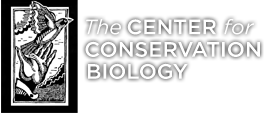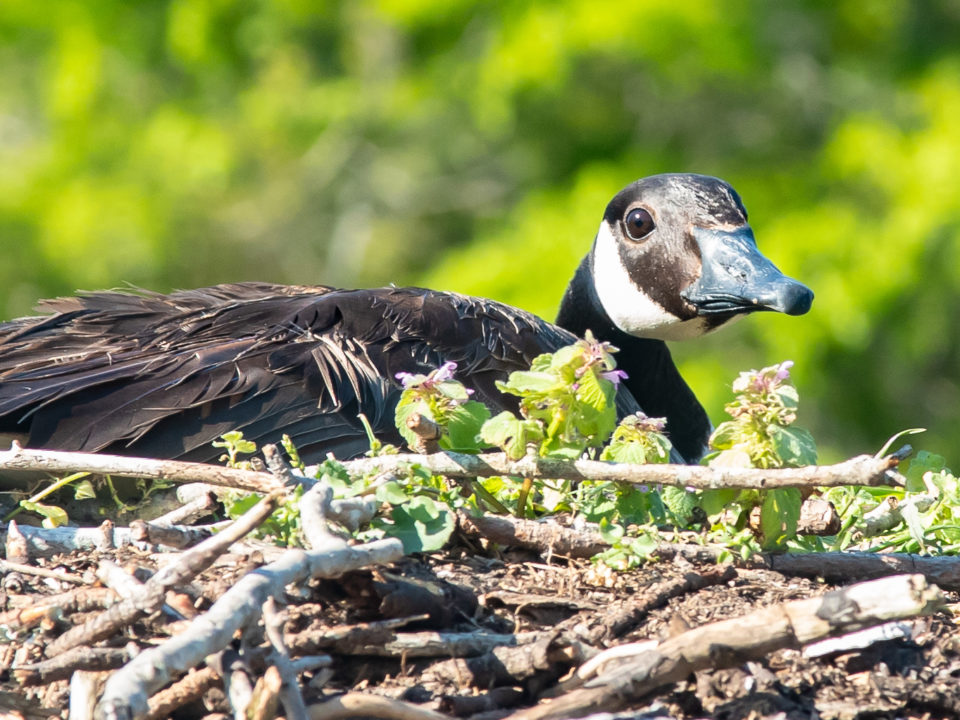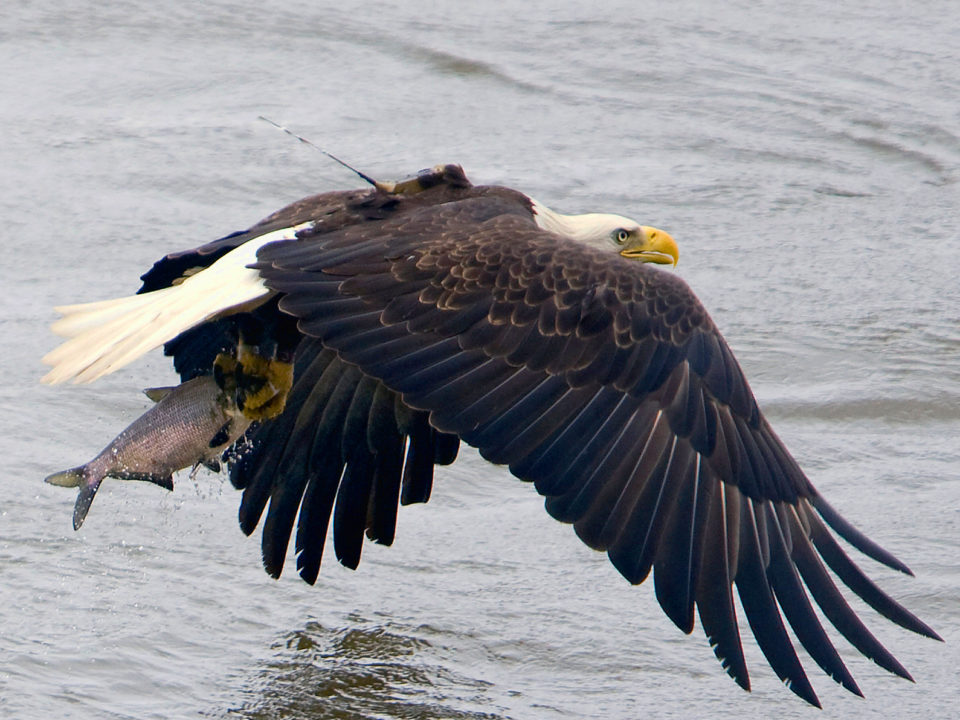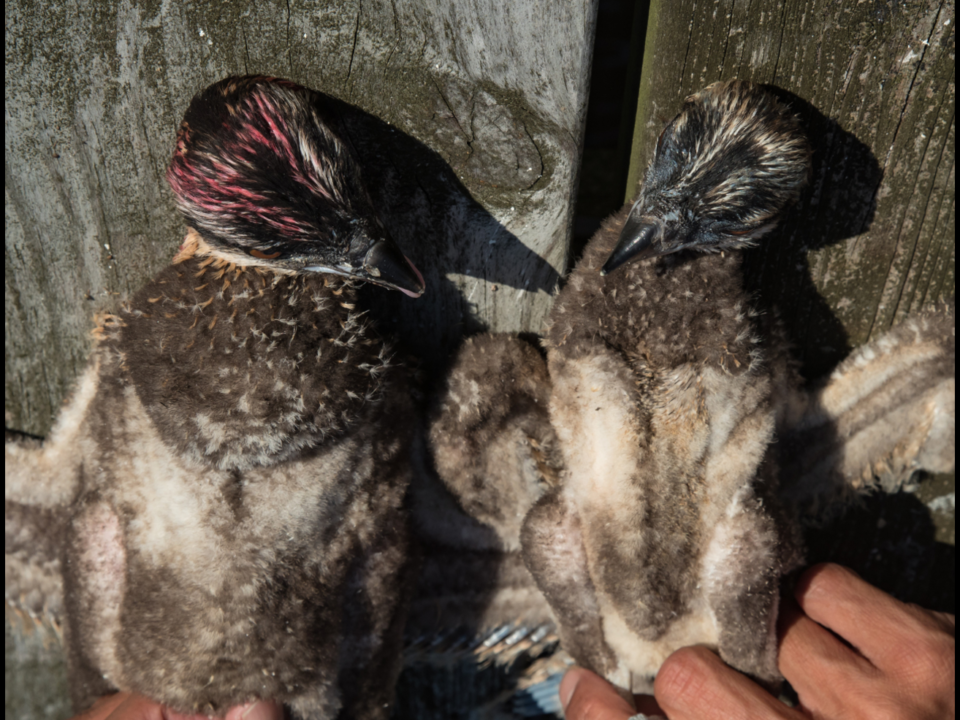Black-bellied plovers complete annual cycle
Conservation in conflict: peregrines and shorebirds in the mid-Atlantic
July 6, 2016Blood work
July 7, 2016
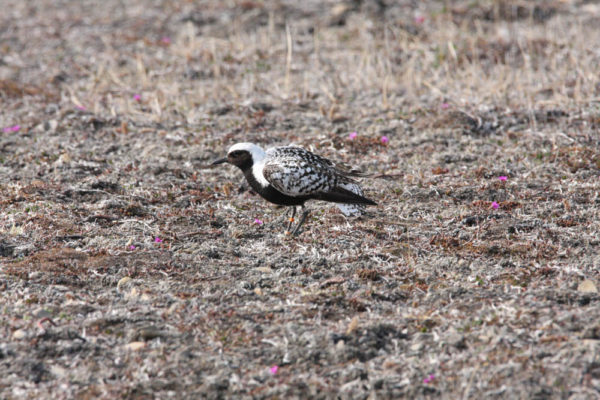
Black-bellied plover on Bathurst Island. Plover is using a distraction display to lead us away from the nest. Photo by Fletcher Smith.
Three black-bellied plovers have been tracked from their wintering grounds back to their breeding grounds, completing the annual cycle of this species. These birds were originally tagged on Bathurst Island during the breeding season of 2015 by The Center for Conservation Biology and Canadian Wildlife Service staff. These birds were tracked to a broad range of wintering locations, and recently migrated back to their breeding grounds. This annual migration cycle of black-bellies was previously unknown and the study has begun to shed light on the behaviors and habitats of the plovers.
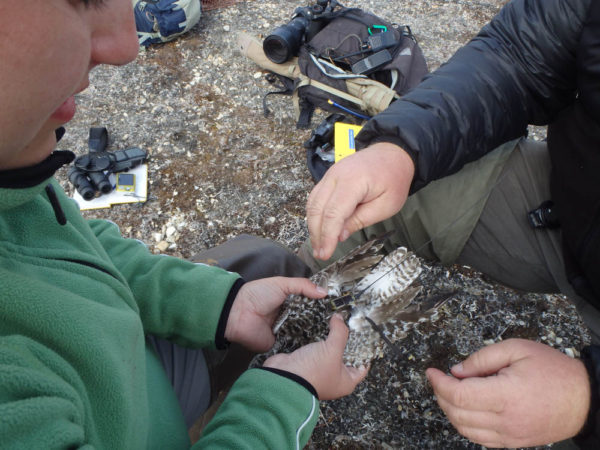
Julie Belliveau and Fletcher Smith attach a transmitter to a nesting black-bellied plover during the 2015 breeding season. Photo by Beth MacDonald (CWS).
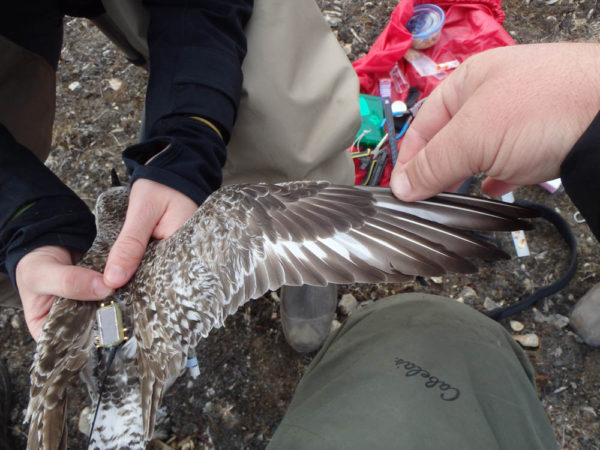
Inspecting molt pattern on the plover. The 5-gram satellite transmitter has been attached and the remaining measurements are being taken. Photo by Fletcher Smith.
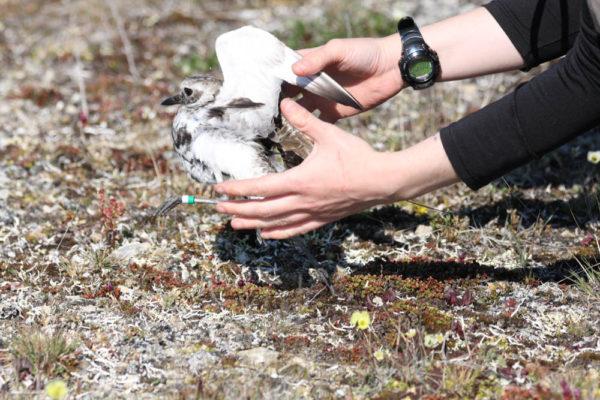
Beth MacDonald releases a transmittered black-bellied plover. Photo by Fletcher Smith.
The locations of the wintering grounds were somewhat surprising in that the plovers were spread along a 40 degree longitudinal gradient of the tropics (from Honduras to Brazil). The majority (78%) of tracked shorebirds showed little variability in wintering location, especially in one breeding population/area. This large winter range suggests that black-bellied plovers may be able to withstand local and potentially large scale pressures better than other shorebird species that concentrate in large numbers in narrow migration corridors (i.e. Whimbrel, Lesser Yellowlegs).
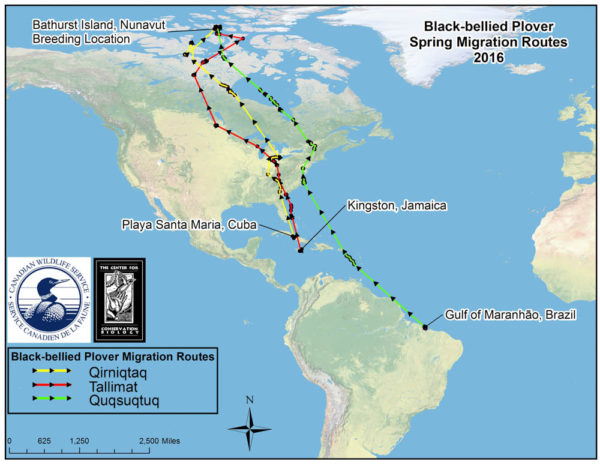
Migration routes of black-bellied plovers from wintering grounds to breeding grounds on Bathurst Island, Nunavut, Canada. Data from The Center for Conserv
The plovers arrived on stopover grounds near Swanquarter, North Carolina, in Beaufort, South Carolina, and the north shore of Lake Erie, near Windsor, Ontario, in late April and early May. One plover flew non-stop 3,400 miles from Brazil to North Carolina in roughly five days, which is both amazing and now expected. After three weeks of feeding and resting at those stopover sites, the plovers were back on the wing, stopping along Lake Manitoba, and in the far northern reaches of Northwest Territories and Nunavut, Canada. These stops lasted between a week and ten days with the pull of the breeding season winning out. All three plovers arrived on breeding grounds in early to mid-June. Understanding the linkages between these far-flung stopover sites will be critical in conservation of these and other shorebirds moving forward.
The Canadian Wildlife Service crew is back at Bathurst Island this summer and hopefully they observe good nesting success from the tracked plovers and the other birds of Bathurst Island. The satellite tracking of black-bellied plovers is a collaborative effort between The Center for Conservation Biology at the College of William & Mary and Virginia Commonwealth University and the Canadian Wildlife Service, who initiated the tracking project in 2014. Logistical support for the Bathurst Island field expedition was provided by the Polar Continental Shelf Program in Resolute, Nunavut. The tracking of the plovers is an ongoing project and the birds can be followed at Seaturtle.org.
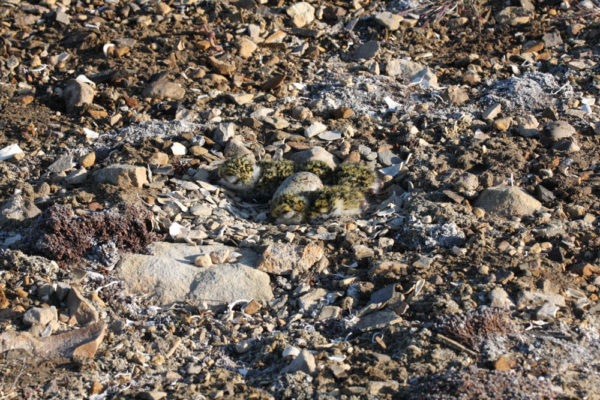
A nest cup of recently hatched black-bellied plover chicks. Successful nesting is one of the main drivers of population stability in shorebirds, many of which are in steep declines. Photo by Fletcher Smith.
Black-bellied plover broods recently hatched chicks. Video by Fletcher Smith.
Written by Fletcher Smith | fmsmit@wm.edu | (757) 221-1617
July 7, 2016
Related posts
A brood of osprey in Mobjack Bay showing a well-fed chick (left) and an emaciated chick (right). The chick on the right would die the following week due to starvation. Work in Mobjack Bay over a 40+ year period has shown that both reproductive rates and food delivery rates have declined dramatically. The decline in provisioning has led to an increase in brood reduction or chick loss due to starvation. Photo by Bryan Watts.
